Road Tripping to Hanging Monastery and Yungang Grottoes
Esme Fox takes a road trip from Beijing to Datong to see Hanging Monastery and the Yungang Grottoes.
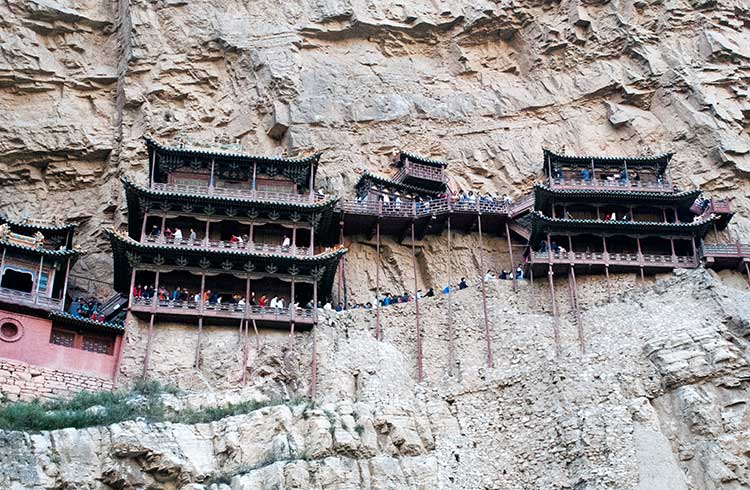 Photo © Dan Convey
Photo © Dan Convey
I am on holiday in Beijing, but surprisingly it’s not the Great Wall of China or the Temple of Heaven that I’m excited to see, it is the gravity-defying Hanging Monastery, which lies around 217mi (350km) to the west, close to the border with Inner Mongolia.
Road Tripping from Beijing to Datong
I’ve decided to make a road trip of it, along with my husband and a couple of friends who are living and teaching in Beijing. The journey to the Hanging Monastery is supposed to take four hours, but after a couple of hours on the highway, we aren’t making much progress because of the traffic and the GPS, which keeps sending us the wrong way.
The GPS directs us to turn off onto a windy mountain pass, where the Hanging Monastery supposedly sits just beyond. We hit a road block when we get stuck between two trucks hauling gravel back and forth for road works. When we finally get free, I study the map closer and realize that we aren’t far from the Yungang Grottoes, so we take a brief detour to get there. The four-hour trip ended up taking us eight hours.
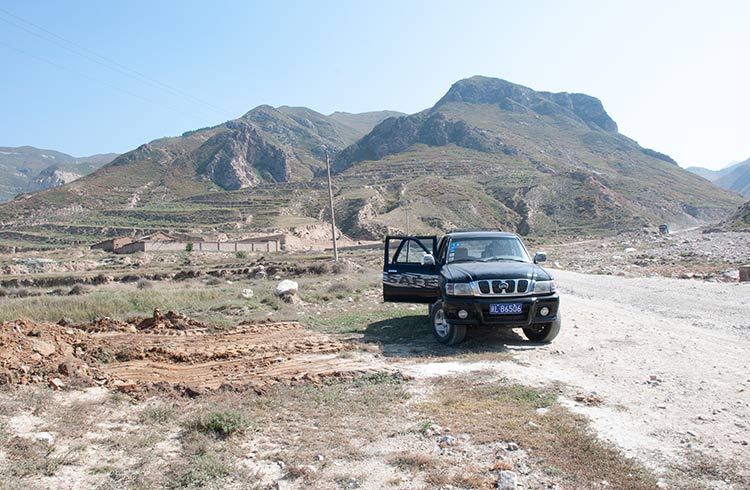
Marvelling at the Yungang Grottoes
The Yungang Grottoes are a complex of caves, housing some of the best Buddhist cave art from the 5th and 6th centuries and are on the UNESCO World Heritage list.
The 252 caves are filled with 51,000 statues chiseled from the rock and towering far above our heads. Some reach up to 55.7ft (17m) in height. We spend several hours exploring the caves, being dwarfed by the statues.
We head to the nearby city of Datong for the night, to enjoy traditional Chinese hotpot, cooking our meat and vegetables ourselves at the table in a bubbling wok.
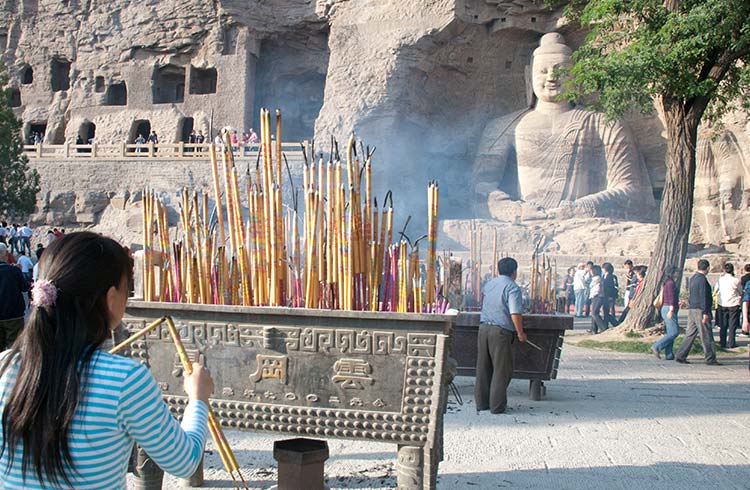
Hiking up to the Hanging Monastery
The next morning, armed with directions and maps from our hotel staff, we travel one hour and 20 minutes from Datong, 52mi (85km), to the Hanging Monastery.
Looking up at the rock face of Hengshan Mountain, the ancient Hanging Monastery appears to cling precariously to the sheer precipice. More than 246ft (75m) up, it is shaped like a sleeping dragon and is held up by nothing more than spindly wooden poles.
Throngs of visitors make their way up the mountain by a steep path and flights of stairs, forming a long thin ribbon of color all the way to the top. As I walk, I notice that most of the faces around me are Chinese – very few foreign travelers seem to have made the trip.
The construction of the temple was believed to have been started by a single monk named Liao Ran and built from 368 to 534 AD. It was added to over the next 1,400 years and restored in the 1900s. It comprises 40 halls and long narrow corridors, built on cliffs more than 98ft (30m) high. This almost impossible architectural feat is the only temple dedicated to three religions – Confucianism, Taoism and Buddhism.
With each step, the antique wooden stairs creak beneath the hundreds of pounding feet and it feels as if the dragon stirs. At the entrance to the temple, I become aware of the sheer drop to my right – just a solitary bamboo handrail is between me and the rock face.
Now closer, I can clearly make out the monastery’s ornate pagoda-style yellow and green roof tiles – and to my horror, feel the gentle sway of the entire structure beneath my feet, and hear the soft crunch of the wooden poles – the only things holding us up – moving against the rock.
Standing at over 164ft (50m) tall, the temple is built over three levels, joined by old rickety wooden staircases. Slowly, I am carried along with the tide of people from room to room, along passages chiseled directly into the cliff face, peering into musty spaces filled with intricate religious statues and icons. Finally, I reach the other side of the gravity-defying constructiona nd make my way back down the mountain.
Safely back on the ground, I look up again and can just about make out the temple gently swaying from side to side. With the weight of so many people inside, it’s hard to believe this 1,500-year-old temple is still standing. I feel lucky to have walked inside this ancient treasure and wonder how long it will continue to stand.
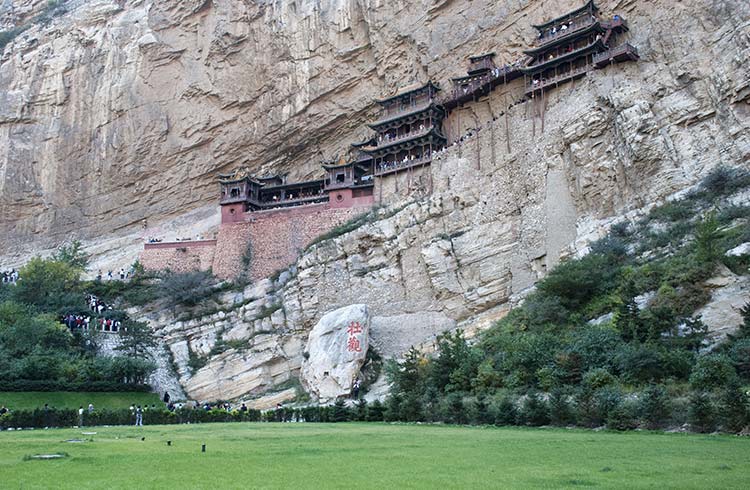
Trip Notes
How to Hire a Car in China
There are a couple of ways you can do a Chinese road trip, if you don’t have friends who own a car. The first is to hire a car with a driver – there are various local travel companies in Beijing that offer this service.
The second way is pre-book a car through an international company such as Avis or Hertz, then obtain a provisional Chinese driver’s license once you’re there. You can apply for this directly at the airport when you arrive in Beijing and it will just take a few hours.
Where to Stay in Datong
There are a number of accommodation options available in Datong, but not too many around the Hanging Monastery or the Grottoes. They range from budget inns to four-star hotels.
Related articles
Simple and flexible travel insurance
You can buy at home or while traveling, and claim online from anywhere in the world. With 150+ adventure activities covered and 24/7 emergency assistance.
Get a quote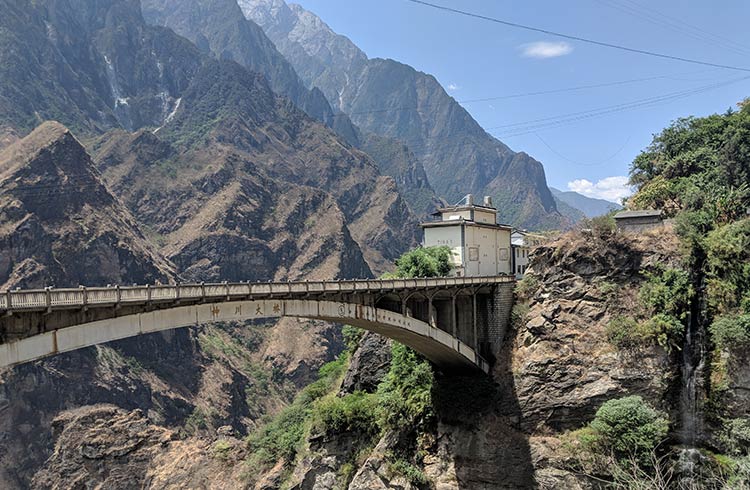

No Comments